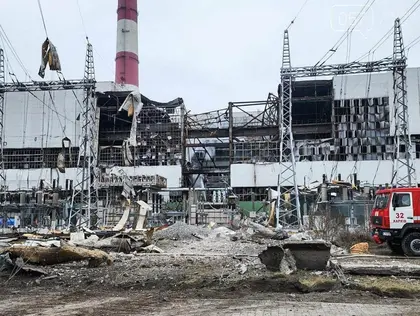In a change of tactics, Moscow is now trying to destroy Ukraine’s energy infrastructure by using precision-guided missiles to eliminate power plants in less-protected areas than Kyiv, the Financial Times reported.
Between March 22 and March 29, Russia struck seven thermal power plants – all in regions other than Kyiv, which has one of the best air defense systems in the country. Russian missiles also hit two hydroelectric power plants, the FT reports.
JOIN US ON TELEGRAM
Follow our coverage of the war on the @Kyivpost_official.
And now the Kremlin's goal is permanent, irreparable damage versus temporarily disabling. Some facilities will not be fully restored until next winter.
“The same number of missiles used in the [2022-23] winter attack are now being directed at five to six energy facilities in one region,” said Maria Tsaturian, head of communications at Ukrenergo, Ukraine’s national transmission system operator.
Maksym Timchenko, director of DTEK, Ukraine's largest electricity producer, said that if not for the warm weather, energy imports from the EU, and increased renewable energy production, Ukraine could have experienced large-scale blackouts, like in previous years.
Back then, Moscow tried to plunge Ukrainians into darkness and cold, but now Russian missiles are targeting power plants in certain regions to “eradicate them, because it is impossible to restore power plants in a short time.”
Also, compared to previous years, Russia is now using expensive, precision-guided ballistic missiles. A recent attack on a coal-fired power plant used $100 million ballistic missiles that can only be shot down by Patriot air defense systems, of which Ukraine has limited supplies.

German Defence Minister Visits Kyiv
According to Andriy Chernyak, a representative of Ukraine's military intelligence (HUR), Russia has enough missiles for one or two more major attacks in the coming weeks.
“The solution for us is distributed generation,” Timchenko told FT.
Solar power is now generating between 20-25 percent of Ukraine’s energy needs. Wind farms and solar stations are spread out and make it impossible for Russian strikes to take out Ukrainian energy in the same way.
You can also highlight the text and press Ctrl + Enter






